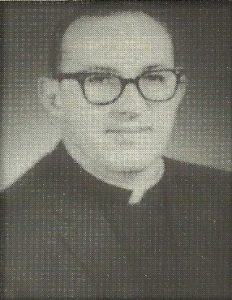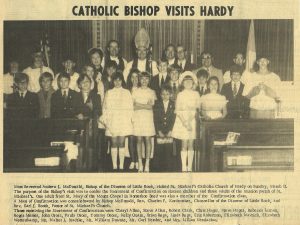NOTE: Formatting is not suited for a cell phone or tablet-sized screen; therefore, it is best viewed on a computer.
St. Michael’s Parish History
The information on the formation of the Catholic Church in Hardy, AR, and the years prior to the Cherokee Village location, was gathered from various sources. We thank those who took the time to document the early years of our Parish history.
Hardy, AR, in the early 1900s: In the early 1900s, Hardy area’s main sources of income were farming, logging, and resorts. Peach and Apple orchards lined the dirt road between Hardy and Ash Flat; the Frisco Railroad was buying all the timber for ties for their tracks, and Spring River was a popular vacation place for the people in Memphis. The main attractions in Hardy were two theatres, a bowling alley, a night club, a dance hall, and a big public beach.
The first known Catholics to the area were Godlieb and Bertha Wavrick and their 5 children, who moved to Draft, AR, now part of Cherokee Village, in 1912. As more Catholics moved to the area, they hid their religious affiliation from the general public in order to be successful in business. (Anti-Catholic prejudice was quite prevalent throughout the state.) To dispel fears and misinformation, the diocese sent seminarians to conduct familiarization meetings. These were held at the Shady Ridge School (Hardy). The Seminarians did a good job explaining the faith and answering the interrogation of the non-Catholics, with bibles in hand, but this still did not dispel the fear and prejudices of the people about Catholics.
The Development of St. Michael’s as a Mission: In the years prior to the erection of a church building in 1939, the few Catholics living in and around Hardy, AR, had long drives over very rough dirt roads to attend Mass at neighboring parishes such as Thayer, MO, and Hoxie & Paragould, AR. The very first priest who came to this area to offer Mass was Father Raymond J. Morman. Father Morman would use the train to get to Hardy from Paragould. The Wavrick family would meet him at the station to take him to their farm in a wagon. The Draft Post Office (and Store) was in the front room of the Wavrick home. Mrs. Wavrick was the Postmistress, and it was on the post office counter that Fr. Morman would offer Mass. This practice went on for many years. Mass was also offered at the “old” Higgenbottom Funeral Home. The children of the early Catholics would receive their Sacraments at St. Mary’s Church in Paragould, AR.
There were intermittent visits by other priests of the Diocese offering Mass at various homes: Rev. Charles Stanowski in 1934; Rev. Otto Butterbach between 1934-35; and Rev. Henry W. Nix from 1935-43. Father Lawrence H. Schaefer, pastor from Hoxie, AR, also came in the 1930s to offer Mass. Fr. Schaefer was the one who helped the early Catholics plan and start fundraising for a church in Hardy.
The First Parish Vocation: Sister Mary Philippa Wavrick, OSB, was born Cecilia Ruth, the 1st of five children of Godlieb and Bertha Wavrick, on July 19, 1909, in Burke, Idaho. The Wavrick family moved to Arkansas in 1922, building a home on land they purchased in Draft, AR. Bertha wanted her children to attend a Catholic School, and she found such a school in Paragould, AR, called St. Mary’s. St. Mary’s was a boarding school operated by the Benedictine Sisters, and it was there that Cecilia’s future life was influenced. She also learned to play the piano there and became an accomplished pianist. In January of 1930, Cecilia entered the Holy Angels Convent of Benedictine Sisters in Jonesboro, AR. Later that year she made her First Profession of Vows, was Prioress from 1954-1966, and died on August 4, 2004.
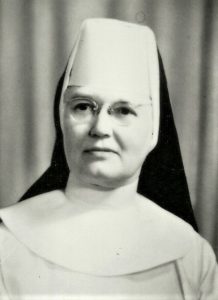
1939
Property Deeded for a Church: On January 14, 1939, approximating one acre, more or less, of the Beck Estate was deeded to Rev. John Morris, Bishop, and his successors, for the use and benefit of the Diocese of Little Rock. The deed had a reversal clause, which stated that it was not to be used for any other purpose, and when no longer needed, the deed would revert back to the original grantor. (Years later, when it was not possible to expand any further and a new church was needed, the land and building could not be sold for profit, but had to be deeded back to the Beck Estate.)
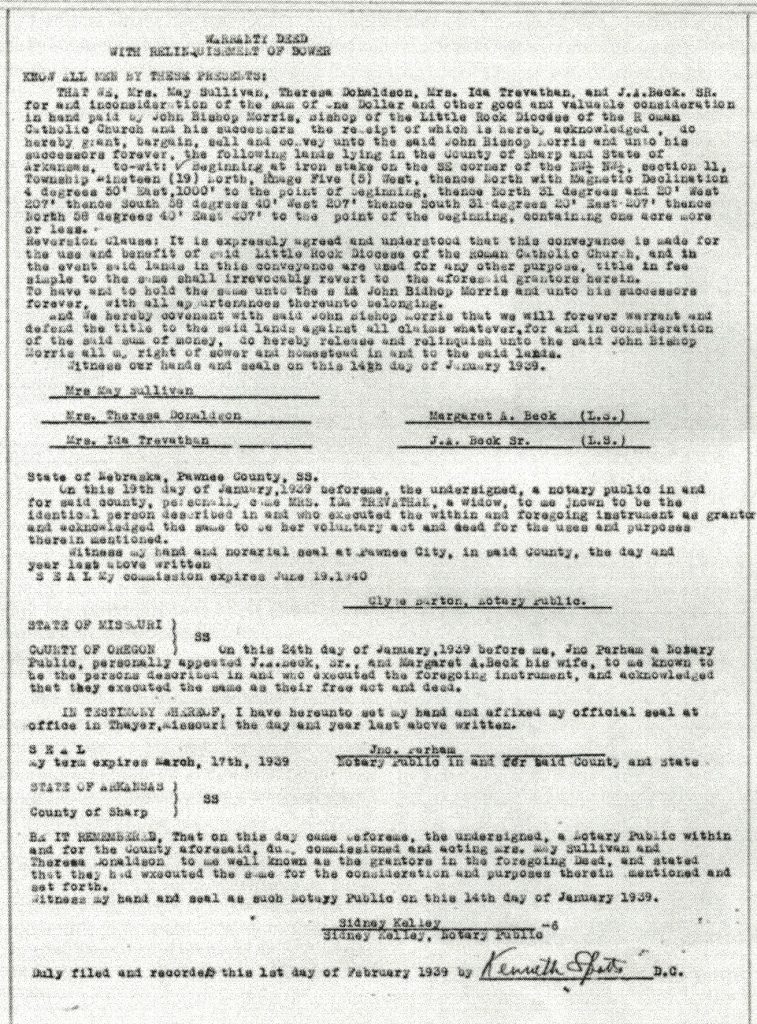
The Planning Began: It was said that a generous lady donor requested the church be named in memory of her deceased husband, Michael. Mrs. Waverick, with the aid of several other families, was very active in the organizing and planning of St. Michael’s as a Mission. The Diocese of Little Rock aided the parishioners in erecting a native stone church. Fred Wise, a rock layer, built the church of local native stone. The framing of oak was done by Mr. Avery. Mr. Henning made the doors and wooden candlesticks from cedar. He also made the front door hinges in his blacksmith shop. This church for many years was without water, plumbing or any air conditioning. A wood-burning stove near the wall on the left-hand side of the altar was the sole means of heating, with the wood being cut and brought in by the parishioners. Its seating capacity was estimated at 75.
The First Mass: On July 23, 1939, the first Mass was celebrated in the new church building by Rev. Lawrence H. Schaefer, pastor from the church in Hoxie, AR.
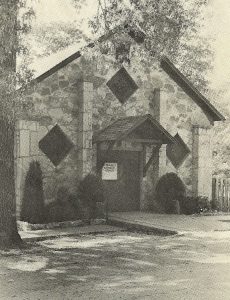
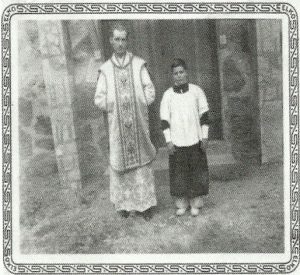
1940s
Dedication of the New Church Building: On April 20, 1941, Bishop Fletcher Dedicated the new church and Confirmed five children. He was assisted by Fr. McCormick, the new pastor in Hoxie and priest-in-charge of Hardy, as well as Fr. Joseph Walshe. On this occasion of Dedication and Confirmation, the church was filled, to a very great extent, with non-Catholics. Unfortunately, Fr. Schaefer, who helped with the planning of the new mission church, had been re-assigned from Hoxie to Eureka Springs and was unable to attend.
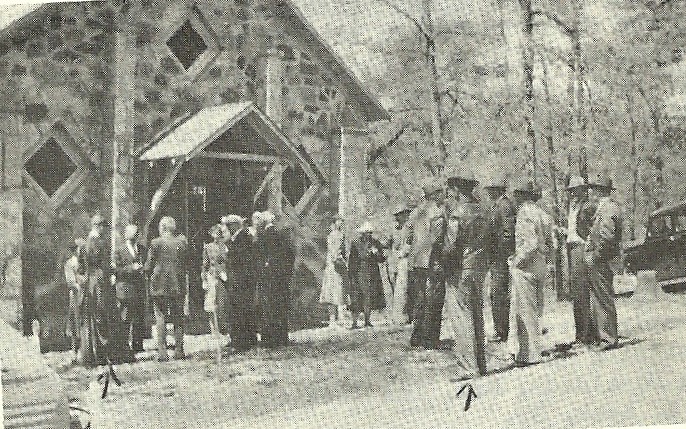
Mass Schedule: In the early 1940s, Mass was still celebrated intermittently in the new church, in 1941 by Fr. E.J. McCormick, in 1942 by Fr. Thomas Reynolds, and beginning in 1944 by Fr. Amos Enderlin. In March of 1945, Rev. S. F. Jacklin, stationed at St. John’s Church Engleberg, AR, in a letter to the Bishop, stated that he would say Mass on the Second and Fourth Sundays of the month at St. Michael’s in Hardy. This started the custom of the pastorate of St. John’s Parish, Engleberg, having the care of St. Michael’s Mission. Sacramental records were then kept at St. John’s in Engleberg. From Christmas 1949 onward, Fr. Enderlin, the priest in charge at the time, agreed to celebrate Mass every Sunday.
Attendance: The early St. Michael’s Mission had eight families. Although attendance was scarce, the movement to this area was on. During the winter months, the number of people attending Mass would number from 15 to 20. During the summer months, due to vacationers, the number would rise to around 75-100. In the mid-sixties, the church started to show growth, by 1968 the summer Masses were standing room only.
Firsts: The first Baptism, Phyllis Bailey, was on December 2, 1945, by Rev. Stephen F. Jacklin. The first marriage of recorded at St. Michael’s was on March 9, 1947, uniting John D. Sullivan and Catherine Lea Henning. The first First Communion was Susan Embrey on Christmas Day 1950. The first Confirmation was the day of Dedication, Bishop Fletcher Confirmed 5 students. Catechism class was begun after Mass in 1955; it was held in the small room behind the altar.
Until 1975, the priests assigned to the pastoral care of St. Michael’s Mission were from the parish in Engleberg:
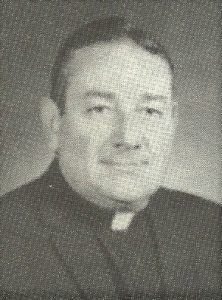
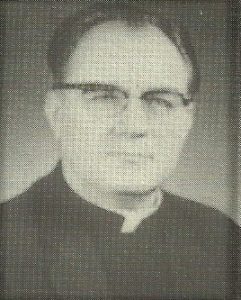
Altar Society: In the late 1940s, under Fr. Enderlin, the ladies formed an Altar Society. They made coffee cakes which they sold and served with coffee after Mass, in the small room behind the altar, to raise money for items needed for the new church. As the congregation grew over the years, the coffee cakes were replaced with donuts.
1950s
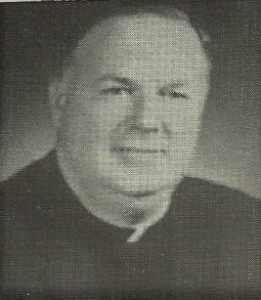
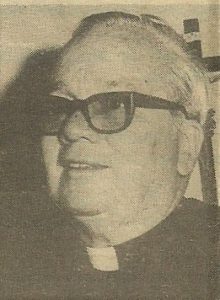
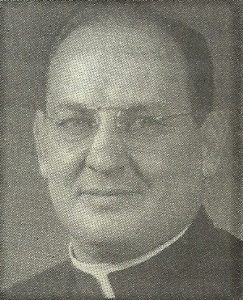
Pews, Altar & Stain glass Windows: In the early 1950s, Fr. Reynolds obtained new pews. He put pads on the kneelers in the front pews, which encouraged parishioners to sit upfront. Paul & Kay Burch donated a new altar to replace the handmade one, and Ed Weimer donated stained glass windows.
Basement & Remodel: In 1957, a basement was hand dug underneath and a wood furnace was installed to replace the wood stove in the upstairs corner of the church. The Church was also slightly enlarged and remodeled. There was still no indoor plumbing at this time. An old organ was placed in the back of the church, but few would brave the keyboard with its intricate nature to play it for Mass.
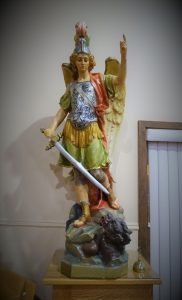
St. Michael Statue: In the late 1950s, this statue of St. Michael was donated by St. Michael’s parish in Memphis, TN. It was placed above the door of the church looking down on all who passed through the door. Today, 2018, it stands on a table inside the nave of the church.
1960s
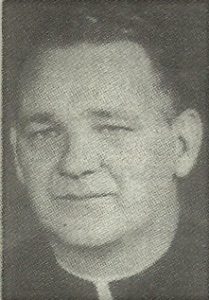
Parking Lot: In the early 1960s, progress was being made under the direction of Fr. Janesko. The men began to work on making a parking lot.
New Organ: In the spring of 1967, Fr. Janesko found a music store in Paragould owned by a Catholic, who offered to take the old organ in trade for a new one. With $800 in donations, they were able to purchase a new organ which was installed in the back of the church. The store owner also offered to give free music lessons to anyone willing to learn how to play the organ. A young woman from Engleberg offered and became very adept as an organist. She would travel to St. Michael’s with Fr. Janesko to play our organ for Masses and other celebrations as needed. Fr. Janesko had a fine voice and would lead the parish in songs at Mass. Later the organ was moved to the front and a sound system added to the organ and lectern.
Number of registered families in 1967: 42
Altar Society: In the late 1960s, the Altar Society, originally formed in the late 1940s, began to meet the 1st Tuesday of each month. The activities of the Altar Society were varied. Besides laundering altar linens and offering Coffee after Sunday’s Mass, Raffles and Bake Sales were held to raise money for various projects. The yearly Bazaar was started in 1971, which helped the ladies in doing their good works, such as buying hosts, wine, candles, vestments, linens, etc, for use when offering Mass.
St. Michael’s Men’s Club: The Men’s Society, begun in the late 1940s, reorganized in 1965 as the Holy Name Society. Then in 1968, the name of the organization was changed to St. Michael’s Men’s Club. The good works of the St. Michael’s Men’s Club were many, especially in the betterment of the church and the church property. To raise money for their projects they began regular Ham and Bean Suppers. A yearly “Oktoberfest” was begun with sausages and beer. They soon began to attend Mass in a body the 2nd Sunday of each month.
Diocesan Council of Catholic Men (DCCM): In 1968, at the encouragement of Bishop Fletcher, who wanted representatives from all the parishes, the men of St. Michael’s joined the DCCM. Through this organization, Bishop Fletcher promoted the organization of Parish Councils in each parish for more involvement of laypersons in various activities of the parishes. The project was very successful.
Expansion Needed: As the growth was still evident in 1968, with standing room only at Mass, a committee was formed, lead by Father John Janesko, to begin planning for an addition to the church. The building fund drive (chicken dinner, a raffle of a donated lot of land, and Bingo, along with pledges) raised $14,410. Together with a $3,000 grant from the Diocese, and a loan of $5,000, enabled the addition of more than 1700 square feet, with 900 square feet added to the upstairs (the church upstairs was extended 30′ in the back) and an approximate like amount to the downstairs. Other improvements were: indoor plumbing was installed with a septic system; a drop ceiling with lights was added to the upstairs and paneling was installed to cover the sheetrock; new window frames were installed and storm windows added; 34 pews were added; a Confessional and Vestry were added to the front of the church; a large sign was placed by the highway. Tables, chairs, dishes, and silverware were purchased with the Altar Society and Men’s Club sharing the cost.
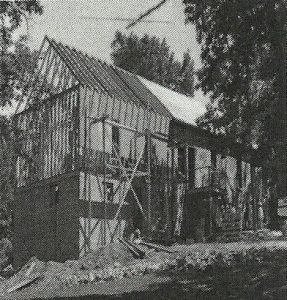
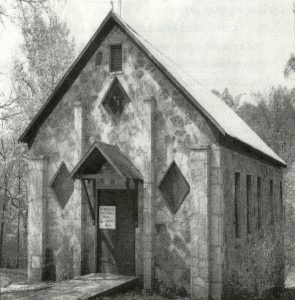
Mobile Home Purchase: A mobile home was purchased in 1969 which allowed Fr. Janesko to spend more time at the mission church, including offering an Anticipatory Mass on Saturday evening during the summer months.
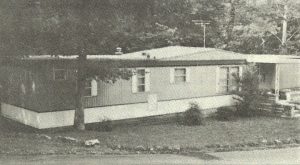
Early 1970’s
Air Conditioning Installed: In 1971, an air conditioning system was installed to replace the wall fans, which greatly aided the comfort of all.
Parish Council Formed: In 1971, Constitution and By-laws for St. Michael’s Parish Council were ratified; however, it wasn’t until September 1974 that ballots were distributed to the congregation and four members of the Parish were elected to the first Parish Council.
Budget Committee Formed: In October of 1971 a Budget Committee was formed to record the Income and Expenses of the parish.
